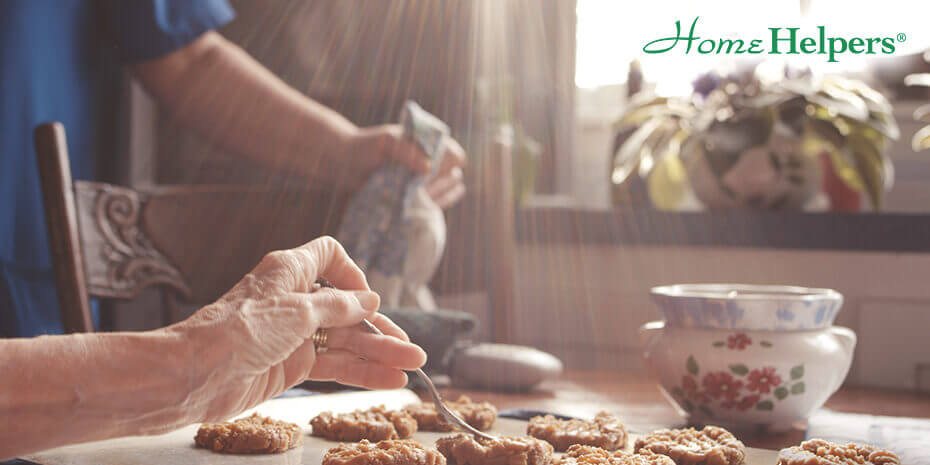Every year, millions of adults fall. In fact, according to the CDC, 1 out of 4 adults aged 65 and older fall each year. Falls can result in serious injuries, ranging from broken bones to head trauma. For elderly adults, falls can be especially dangerous, as they often lead to decreased mobility or even death.
Fortunately, some steps can be taken to reduce the risk of falls in elderly adults. Identifying the leading causes of falls is the first step to creating a prevention plan.
Common Causes of Falls in Elderly Adults
1. Poor Vision – Reduced vision can lead to falls due to decreased depth perception, difficulty seeing obstacles, and other issues. Scheduling regular eye exams and wearing corrective lenses can help reduce the risk of falls. The National Eye Institute recommends that adults aged 65 and older receive an eye exam every one to two years in order to detect any potential vision problems early.
2. Medication Side Effects – Many medications commonly prescribed to elderly patients can cause side effects such as dizziness and drowsiness that affect balance and coordination and further increase their risk of falling. Aside from the physical injuries, taking a fall can lead to a decrease in mobility and independence, which can have a significant impact on an elderly person's quality of life. It is essential that when prescribing medication to elderly patients, doctors consider potential side effects and risk factors and avoid prescribing medication with known side effects that could increase the chances of falls.
3. Medical Conditions - Falls are among the most common and dangerous hazards facing older adults. While many assume that falling is only an incidental side effect of age, medical conditions can play a far more severe role in these incidents. Heart conditions, high blood pressure, stroke, Parkinson's Disease, arthritis, foot pain, dementia and other ailments and health conditions can drastically increase the likelihood of falls among elderly individuals. Even simple changes in vision or loss of balance can impact an older person's ability to move safely. Awareness of existing medical challenges and taking proactive steps to reduce associated risks could provide seniors with increased stability, security, and overall peace of mind.
4. Home Safety Hazards - Our elderly loved ones deserve extra care and attention regarding their safety, especially in their own homes. Sadly, home safety hazards can cause falls, leading to serious injury or even death. Such hazards include loose rugs, electrical cords stretched across walkways, or slippery floor surfaces. It's essential to take a proactive approach to prevent falls by recognizing potential fall hazards in the living space. Making sure that furniture is not blocking pathways; removing clutter and rearranging furniture if necessary; using rubber mats for stability when possible; adding safety bars in bathrooms; utilizing non-stick fabric protectors; replacing worn carpets and considering grab bars are all great ways to decrease risk factors that could lead to an elderly person falling at home.
5. Lack of Physical Activity - Weak muscles, especially in the legs and core, can contribute to falls among elderly patients. Regular physical activity, such as walking or participating in exercises designed for seniors, can help keep muscles strong and reduce fall risk. Exercise is just as important for older adults as it is for younger people, so prioritizing regular physical activity is essential for maintaining mobility and avoiding dangerous falls in our elderly loved ones.
What to do if you fall
Senior adults should get checked by a doctor after falling. According to the CDC, over half of all senior falls go unreported - which can increase the chance of further and more serious injuries. Many falls require medical attention, even if you don't feel any pain. A doctor can help identify whether there is an underlying medical condition or existing injury that needs to be addressed before further falls occur.
Additionally, if a senior falls at home, it is important to make sure the following steps are taken:
Stay calm and take some deep breaths for reassurance
Move slowly to reduce any risk of additional injury
Check for any pain or discomfort in the body
Check for signs of injury to determine if it's safe to get up
Locate and crawl to a chair if you are able to and carefully sit up
Call for help from a family member, friend, or medical professional if needed. If it's an emergency, call 911
After the fall, consider making changes in the home such as adding safety bars or rubber mats for added stability when possible. Also, be sure to keep a phone charged at all times and wear a medical alert device in case of an emergency.
Help Elderly Individuals Avoid Falls
By remaining aware of potential fall risks and taking proactive steps to prevent falls, elderly individuals can feel more secure and safer in their homes. Taking the time to address any existing medical conditions, review fall risk factors, assess home safety hazards, and ensure that medications are prescribed with caution can decrease the chances of future falls and increase the overall quality of life.
One of the most important things to remember is that elderly adults should not be afraid to ask for help if they feel unsteady or in danger of falling or to contact their Doctor if they do fall. Knowing what to do during a fall can significantly reduce any potential harm from such an incident. With the proper precautions, seniors can feel more secure and confident in their homes, knowing they're taking the necessary steps to ensure their safety.
Home Helpers of Scottsdale North offers compassionate in-home care near Scottsdale North, AZ to help seniors stay safe and independent in their own homes. Contact us today for more information about how we can help you or your elderly loved one.

